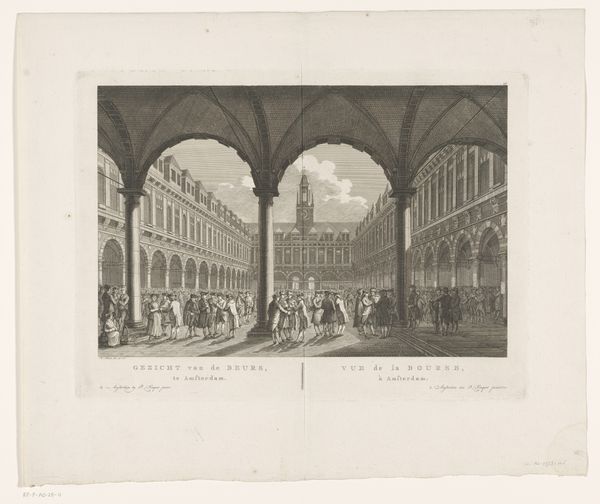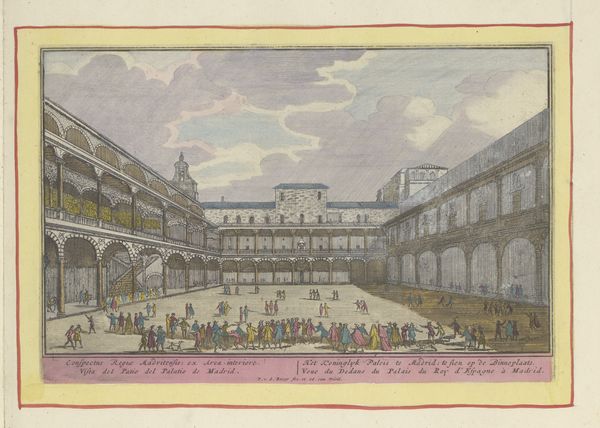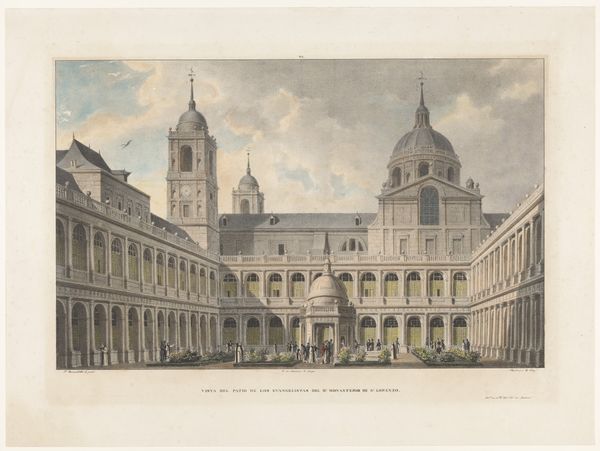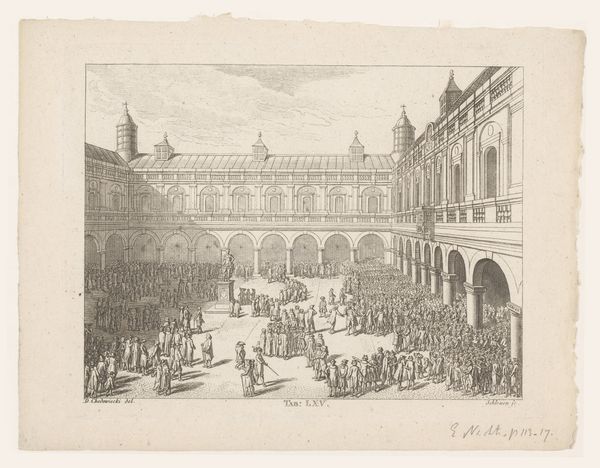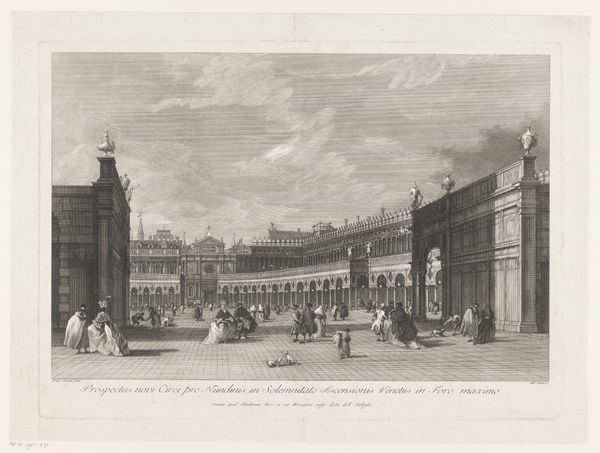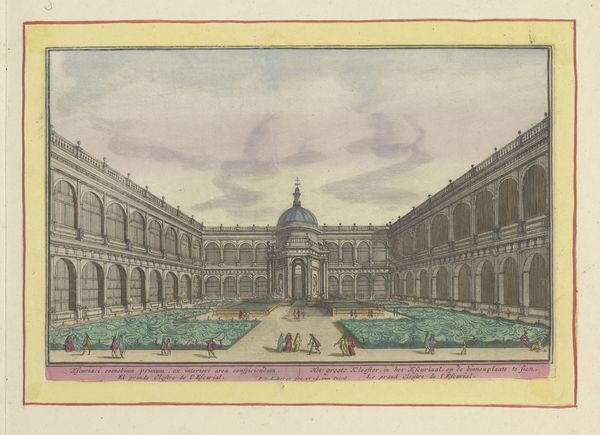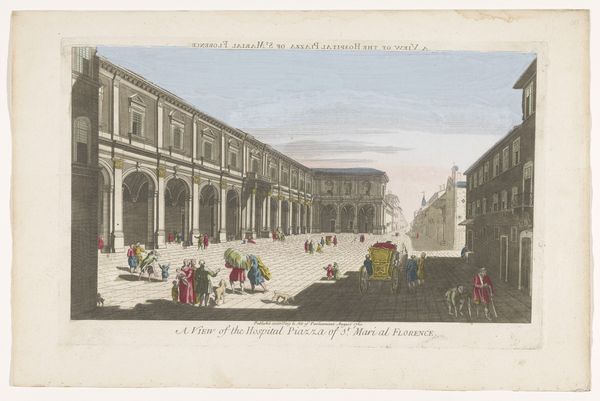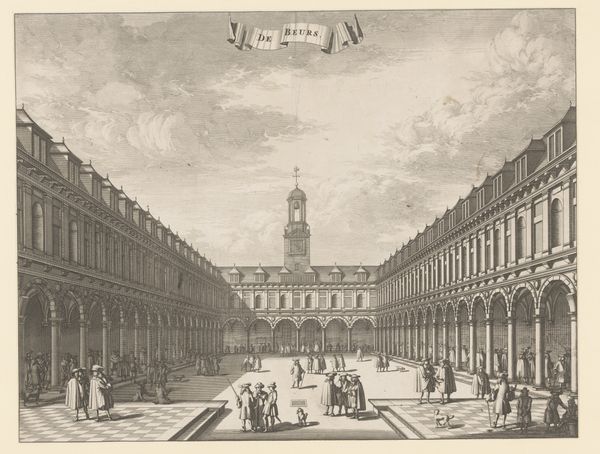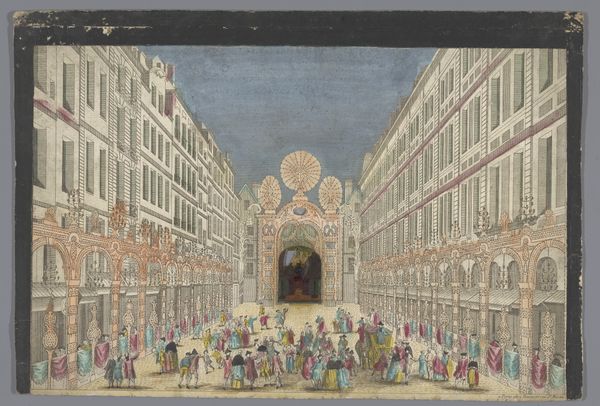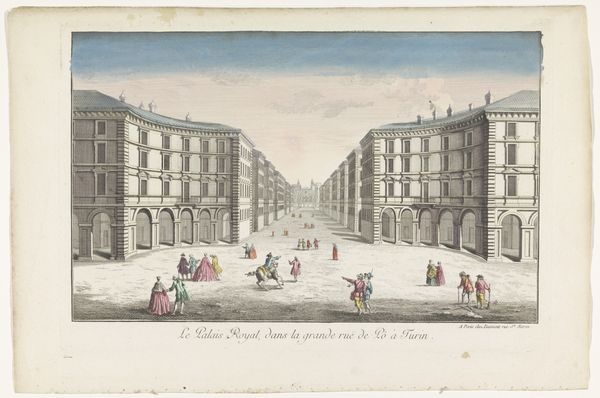
drawing, watercolor, architecture
#
portrait
#
drawing
#
watercolor
#
coloured pencil
#
romanticism
#
cityscape
#
watercolour illustration
#
architecture
Dimensions: height 169 mm, width 248 mm
Copyright: Rijks Museum: Open Domain
Curator: Looking at this watercolour illustration of the Beurs te Amsterdam, ca. 1825, painted by Roelof van der Meulen, one is immediately struck by the bustle. What are your first impressions? Editor: It's remarkable how well van der Meulen captured the energy of the Exchange. The architecture, with its repetitive arches and looming clock tower, seems almost oppressive, yet the flurry of figures prevents it from feeling static. Curator: Indeed. Van der Meulen executed this drawing, with both watercolor and colored pencil, sometime between 1824 and 1830. Given the historical context, we have to understand the Beurs as the epicentre of Amsterdam’s global economic power and a crucial site in solidifying its identity as a world leader. Editor: Exactly! It represents the burgeoning capitalist class. Note how all the figures seem to be male, enacting this theatre of commerce. And looking at the somewhat subdued colors, the overall tone evokes an environment driven by privilege, exclusivity, and potentially exploitative trade practices from that time. Curator: The composition also plays into this feeling of almost inescapable financial destiny, don't you think? The building looms in the background and dominates everything with rigid and overwhelming authority. There’s little escape within this space for inhabitants within the social structure of this portrait, either; everyone is busy and active within the walls. Editor: And to add to your interpretation, from my point of view, the very choice of watercolour lends the illustration an almost dreamlike, ethereal quality, softening the rigid structure and implying that even the hard lines of capital can feel illusory. Perhaps this artwork reveals more about the hopes and fears associated with emerging global economies? Curator: What an interesting suggestion. I believe van der Meulen was able to truly capture a moment in the history of the stock exchange while embedding cues related to the broader anxieties of identity and authority within its confines. Editor: Yes, indeed. By emphasizing the role of both place and portrait, this watercolour transcends simply documenting a moment in time, becoming a mirror reflecting back on our ever-evolving relationships with financial institutions and social classes.
Comments
No comments
Be the first to comment and join the conversation on the ultimate creative platform.
